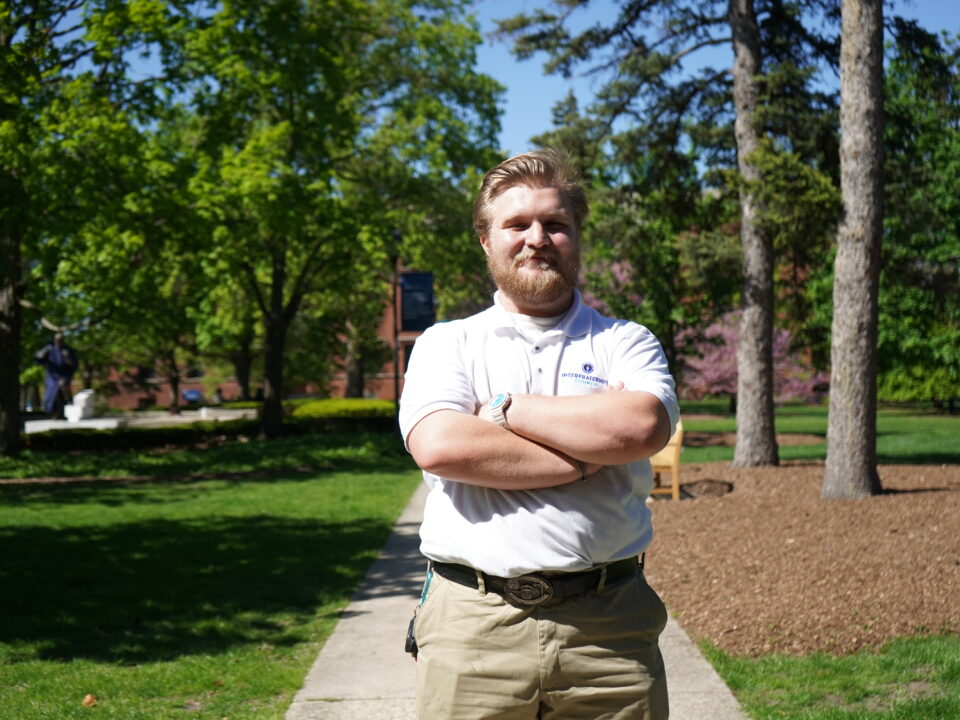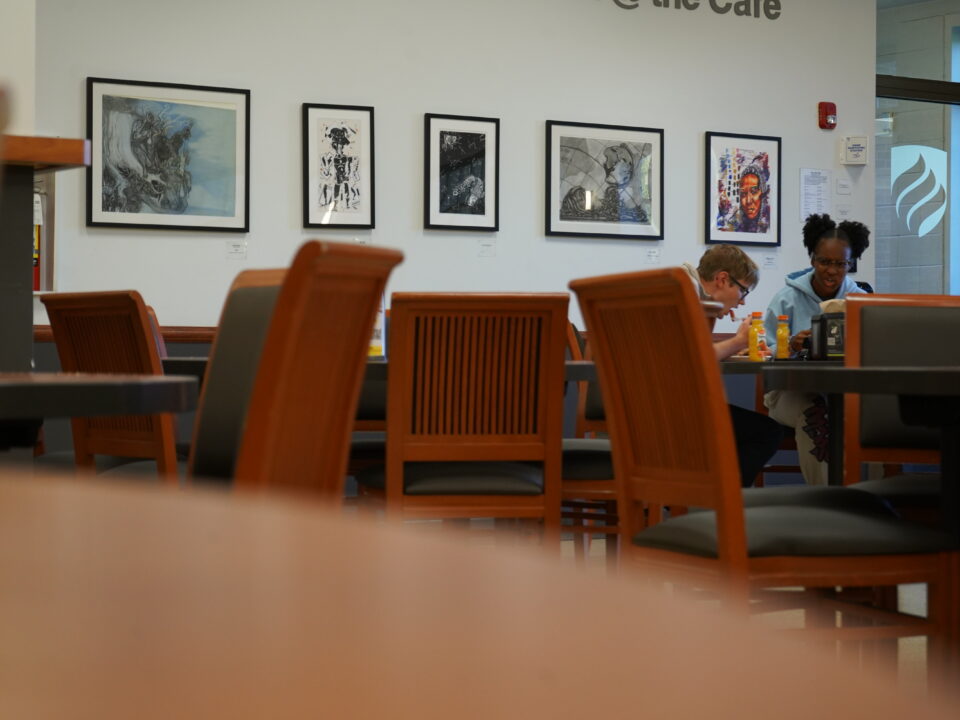EU neglects its students with disabilities
Elmhurst University is not accessible. Most buildings have accessible entrances and elevators, though that does not mean they have equitable access to the facilities within.
Title III of the Americans with Disabilities Act, enacted in 1990, “prohibits private places of public accommodation from discriminating against individuals with disabilities.”
This means any private building accessible to the public must accommodate all people, not just the able-bodied. A strange quirk of the ADA is that it only applies to buildings constructed after its enactment.
The Frick Center has two accessible entrances, but both of these entrances are on the south side of the building. One entrance is on Brune Patio, requiring a long trip down a ramp to access, and the other is roughly on ground level. Though it has a steep ramp that has caused difficulty for mobility-impaired students’ access.
Student Phoenix Bierbrauer is an “ambulatory wheelchair user,” meaning they have a need for a wheelchair but are not necessarily completely unable to move without it. This is the case for the majority of wheelchair users across the United States, though it often carries a stigma.
Bierbrauer said they were assigned the third floor of Niebuhr Hall at the start of their freshman year. Niebuhr Hall has multiple small hallways, no accessible entrances for its living spaces and no elevator.
Because of a miscommunication, they did not receive any housing accommodations.
“I couldn’t go to class most days because I knew that I wouldn’t be able to get back to my dorm most nights. Consequently, I failed most of my first semester classes,” Bierbrauer said.
Of the six main residence halls on campus, only two are fully accessible, according to the Director of Housing and Residence Life, Kevin Krauskopf.
Krauskopf stated that Cureton Hall and West Hall “are the only two [residential] buildings built after 1990, when ADA laws were passed,” with Cureton Hall being built in 1999 and West Hall being built in 2008.
Schick Hall does have an accessible entrance on the lower level with some accessible rooms, but the rest of the building is not accessible. This leaves a very limited space for residents with accessibility needs to live on campus.
For the other halls, “there is no current timeline to make them fully accessible” as it “would require a significant amount of funding,” according to Krauskopf.
Krauskopf continued, “in most cases, it’s more financially sound to build a new building instead of retrofitting ADA compliances into an old building.”
Additionally, there is currently only one academic building constructed after the ADA was enacted: Jean Koplin Memorial Hall.
According to Linda Herell, coordinator of the Access and Disability Office, renovations on buildings built before the ADA was enacted must be completed a certain way.
“For buildings built before 1990 (when the ADA became law), renovations made after 1990 need to include ‘reasonable’ steps to improve accessibility,” Herell said.
This has happened in the case of renovations in the A.C. Buehler Library and the Frick Center.
According to Nora O’Malley, director of Facilities and Management, improvements have been made.
“Even for other campus buildings that are exempt based on their age, many accessibility upgrades have been done,” O’Malley said.
Notably, Irion Hall, built in 1912, and Old Main, built in 1878, have accessible entrances and elevators.
Buildings constructed before 1990 may be compliant to the general degree that Title III requires; however, it still doesn’t mean that accessibility needs are met.
There is only one accessible entrance to Old Main on the east side, and the elevator in Irion Hall is unreliable. In one instance, a staff writer from The Leader waited minutes for the Irion Hall elevator to reach their floor as it had gotten stuck.
Bierbrauer affirms these concerns.
“At first, it was really difficult for me to navigate where the ramps were, and I oftentimes have to leave for classes significantly earlier than able-bodied students,” Bierbrauer said.
They also said the elevators often make them feel “unsafe.”
Bierbrauer also notes that some of the measures the campus has taken to provide access are not up to par. Every accessible entrance to a building has a button for people with disabilities to remotely open the door, but these are often slow or are not working.
“They just don’t work sometimes,” Bierbrauer says. “If I didn’t have a power wheelchair, it would be impossible to get in with my hands full.”
O’Malley stated that almost every academic building is considered compliant.
“All academic buildings with the exception of Memorial Hall are compliant,” said O’Malley.
Additionally, Bierbrauer notes that it can be difficult to work with the Office of Access and Disability, and not just in terms of communication. The disability services office is in the learning center in the A.C. Buehler Library, requiring mobility-impaired people to use a “very slow” lift and then traverse to the back of the building.
Bierbrauer expressed dissatisfaction with this route.
“It’s clearly not a very accessible way to get to the disability services office,” Bierbrauer said.
The actual communication with the Office of Access and Disability can be slow and often requires lots of input from students who need accommodations. Bierbrauer believes staff could be kinder and more empathetic.
The office failed to file Bierbrauer’s accommodation request properly last spring, leading to Bierbrauer needing a last-minute change in their dorm as their initial assignment was not accessible.
“I have, personally, not enjoyed the process of getting accommodations,” Bierbrauer said.
The groundbreaking for a new health sciences building, set to replace the inaccessible Memorial Hall built in 1919, began Oct. 12.
O’Malley noted that the decision to construct a new building was prompted by this problem.
“Accessibility is one of many reasons for this,” O’Malley stated.
It begs the question: How long will it take for all campus buildings to be more accessible? Why has EU not dedicated more time and resources to reconstructing or renovating more buildings on campus?
The new building is a step in the right direction for accessibility and modernization at-large on campus, but it’s not close to enough


